With our animals being our primary concern here at Central Coast Zoo- the Welfare of our animals becomes our number one priority.
What is Animal Welfare?
‘Animal welfare’ describes how the animal is managing with the conditions in which it lives.
We want our animals to have “good animal welfare” which means that they are managing well in the conditions in which they live as oppose to not managing well. This means that we need to provide disease prevention and veterinary treatment, appropriate shelter, management (including enrichment), nutrition and humane handling and humane end of life care.
Here at Central Coast Zoo we provide this by having experienced keepers and carers who understand the needs of our animals. We have our own vet clinic and vet to provide medical support. We also liaise with other institutions to gain from their knowledge and experience as well as industry network bodies. It also means that we work with every government authority required and adhere to their regulations and assessments, including annual inspections.
So how do we tell if our animals have Good Animal Welfare?
Animals do not think or communicate like humans, so to ensure that they have good animal welfare we use scientific evidence to ensure that our animals are healthy, comfortable, well nourished, safe, able to express innate behaviour and are not suffering from unpleasant states such as pain, fear and distress.
When describing our animal welfare, we adhere to the five-domain model which will place the animals overall welfare state into either a positive or negative state. This is based on the evidence of its welfare state in nutrition, environment, physical health, behaviour and mental domains.
The five-domain model was created by Professor David Mellor, former Director of the Animal Welfare Science and Bioethics Centre at Massey University. It is the animal welfare assessment model adopted by the World Association of Zoos and Aquariums in their Animal Welfare Strategy. It provides a best-practice framework to assess welfare in animals of all species. It has surpassed the five-freedom model as it explores and asses the animals mental state as well as the physical.
We adhere to our own Welfare Charter which dictates our responsibilities to those animals under our care.
Welfare Charter:
Central Coast Zoo acknowledges the wild nature of the animals in our care. With this acknowledgement it means that we strive to provide the same type of environment as well as the natural various ranges of experiences that the animals’ biology has adapted to expect and cope with. We recognise that zoos cannot truly replicate the wild, but we can provide an environment that takes into account the animals natural environment, but more importantly the animals physical, behavioural and physiological needs.
Central Coast Zoo strives to be a leader in the care and wellbeing of animals, ensuring we have appropriate infrastructure, expertise and capacity to maintain the wellbeing of all animals in our care and at all times to provide them with the respect that they deserve. We accept a lifelong duty of care for all of our animals in our populations including those who are transferred to other institutions that meet our high standard of care.
Zoos provide an important opportunity for people to learn about and connect with animals which they may never otherwise see. Central Coast Zoo strives to initiate this emotional connection between our ambassador species and people. Central Coast Zoo will manage its collection to strongly reflect its species welfare, public engagement and sustainability goals.
We understand that life in a zoo does place some restrictions on the animals in care, no matter how good the facilities and care are. However there are also restrictions on animals in the wild. Their ‘freedom’ in the wild is often radically restricted by the daily battle to survive. Many animals have their movements restricted and pre-determined by territorial boundaries as well as food sources. Wild animals do not make long journeys for pleasure, but to fulfill the daily needs for food, water, shelter and opportunities to mate. Central Coast Zoo aims to care for our population of animals to a standard at least comparable to, but in most cases far exceeding the conditions of their wild counterparts. With this in mind the main difference between life in the wild and a zoo is the presence of people in many forms on a daily basis. Central Coast Zoo endeavours to give our animals the understanding that people are not to be feared but are an opportunity for the animal to control elements of its own environment through interaction.


